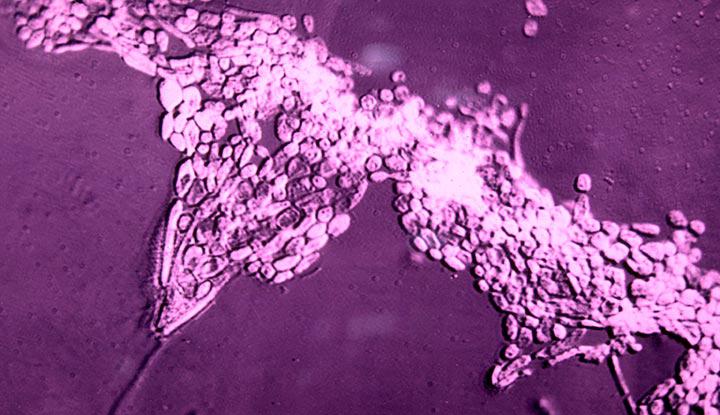Candida Albicans
Candida albicans is a harmless fungus that lives in and on your body in small amounts. Healthy bacteria help balance the yeast and prevent it from overgrowing. But when something disrupts the balance, yeast infections like thrush can develop. Although uncomfortable, these infections are common. Healthcare providers use antifungals to treat them.

What is Candida albicans?
Candida albicans, a type of yeast, is a fungus that naturally lives in and on your body. It’s typically found in small amounts on your skin and in your mouth and intestines. Candida albicans is the most common species of Candida yeast.
Normally, healthy bacteria in your body (your microbiome) control the balance of Candida albicans. But when Candida albicans is off-balance, the yeast can overgrow and cause a fungal infection.
What does it mean if you have Candida albicans?
Candida albicans is a species of yeast. It lives in and on everyone’s body — it’s supposed to be there. It isn’t a problem unless it turns into an infection. If something disrupts the balance of healthy bacteria and Candida albicans in your body, an infection can occur. A fungal infection caused by an overgrowth of yeast is called candidiasis.
Types of Candida albicans infections
Candida albicans can cause different types of infection, depending on where it affects your body. Types include:
- Cutaneous (skin) candidiasis. Yeast grows in the folds of your skin, like under your breasts or near your buttocks (diaper rash). It causes raised, red patches.
- Candidal paronychia. Yeast collects in your nail folds or cuticles. It causes skin discoloration, pain and swelling around your nails.
- Thrush.An overgrowth of yeast forms inside your mouth and throat. It causes raised, white bumps that are painful and irritating.
- Vaginal yeast infection.Yeast multiplies inside your vagina. It causes redness, itching and burning, as well as abnormal vaginal discharge.
Is Candida an STD or STI?
Candida albicans isn’t a sexually transmitted infection. Candida is a type of yeast that naturally lives in and on your body. It can overgrow if the balance of yeast and healthy bacteria in your body changes. The balance of yeast could change as a result of sexual activity, but having sex doesn’t cause an infection.
Candida albicans symptoms
In normal situations, Candida albicans won’t cause any symptoms. Symptoms will only develop if you have an overgrowth of yeast due to an imbalance of healthy bacteria.
Depending on the location of the infection, symptoms may include:
- Skin rash
- Itching
- Blisters
- Small, raised bumps or patches
- Pain, soreness or discomfort
- Burning sensation
- Abnormal vaginal discharge
- Loss of taste (ageusia)
- Difficulty swallowing (dysphagia)
Is Candida albicans contagious?
Normally, yeast infections aren’t contagious. But Candida albicans can spread if you have a weakened immune system or you’re taking certain medications. If you’re healthy, it’s unlikely Candida albicans will spread to you.
How do I get rid of Candida albicans?
Candida albicans is a naturally occurring fungus that lives in and on your body. So you don’t want to get rid of it.
If you have an infection, Candida albicans treatment involves antifungal medication. Your healthcare provider will prescribe the appropriate type for your condition.
Antifungal medications come in three main forms:
- Oral. This ismedicine you take by mouth (tablet, liquid or lozenge).
- Topical.This is medicine you apply directly to the affected area (creams or ointments).
- Intravenous (IV). This is medicine you receive through a vein (in severe cases).
Your provider will give you directions on how to use the antifungal to make sure the infection clears up and doesn’t return.
What can I expect if I have Candida albicans?
If you’re healthy, Candida albicans won’t pose any threat to your well-being. If you experience any symptoms of infection, contact your healthcare provider for treatment. In most cases, symptoms will decrease or go away once treatment begins. Be sure to complete treatment as prescribed by your healthcare provider to reduce the risk of the infection returning.
A note from Wockr
Many different harmless types of fungi live in and on your body, including Candida albicans. But sometimes, yeast multiplies uncontrollably, which can cause a fungal infection. If you develop any symptoms of an infection, talk to your healthcare provider. They’ll ask you questions about your symptoms and your medical history. If you have a fungal infection, they’ll prescribe antifungal medicine. Getting prompt treatment will relieve your discomfort and help you avoid potential complications.